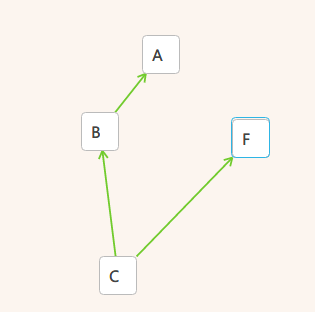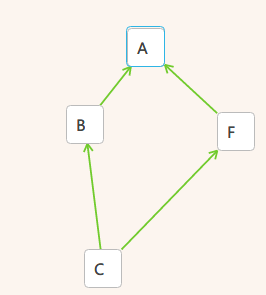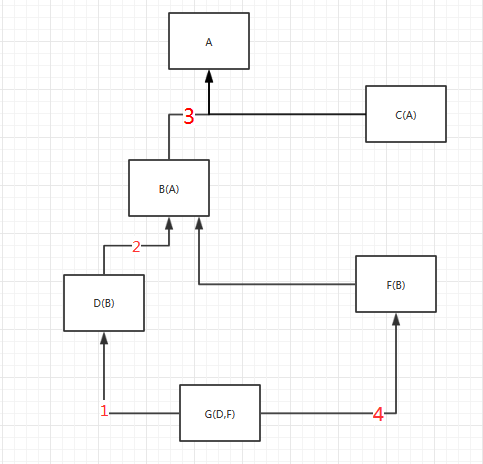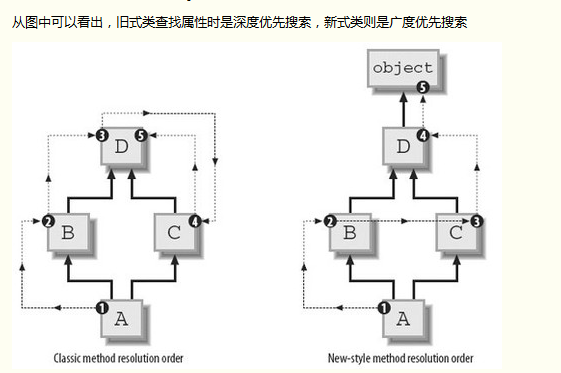python singleton design pattern super() 多继承
python singleton design pattern
-
decorate
-
baseclass
-
metaclass
-
import module
-
super()
一、A decorator
def singleton(class_): instances = {} def getinstance(*args, **kwargs): if class_ not in instances: instances[class_] = class_(*args, **kwargs) return instances[class_] return getinstance @singleton class MyClass(BaseClass): pass
当用MyClass() 去创建一个对象时这个对象将会是单例的。MyClass 本身已经是一个函数。不是一个类,所以你不能通过它来调用类的方法。所以对于
m=MyClass() n = MyClass() o=type(n)() m==n and m!=o and n != o 将会是True
二、baseclass
class Singleton(object): _instance = None def __new__(class_, *args, **kwargs): if not isinstance(class_._instance, class_): # class_._instance = object.__new__(class_) 这行语句和下一行语句作用一样的 class_._instance=super(Singleton,class_).__new__(class_) return class_._instance class MyClass(Singleton): def __init__(self,name): self.name = name print(name)
pros
是真的类
cons:
在多继承的时候要注意
三、metaclass
class Singleton(type): _instances = {} def __call__(cls, *args, **kwargs): if cls not in cls._instances: cls._instances[cls] = super(Singleton, cls).__call__(*args, **kwargs) return cls._instances[cls] #Python2 class MyClass(BaseClass): __metaclass__ = Singleton #Python3 class MyClass(BaseClass, metaclass=Singleton): pass
Pros
- It's a true class
- Auto-magically covers inheritance
- Uses
__metaclass__for its proper purpose (and made me aware of it)
四、通过导入模块
五、
super(type[,object or type])
If the second argument is omitted, the super object returned is unbound. If the second argument is an object, isinstance(obj, type) must be true.
If the second argument is a type, issubclass(type2, type) must be true (this is useful for classmethods).
note :super() 只能用于新式类
链接 https://rhettinger.wordpress.com/2011/05/26/super-considered-super/
多继承,在python3 中全部都是新式类
新式类的继承顺序是广度优先,python2 中的经典类是深度优先
通过一个例子来理解
class A(object): def f1(self): print('a.f1') class B(A): def f2(self): print('b.f1') class F(object): def f1(self): print('f.f1') class C(B,F): def f3(self): print('c.f1') insta = C() insta.f1()
关系图

将会打印出a.f1
如果代码改为
class A(object): def f1(self): print('a.f1') class B(A): def f2(self): print('b.f1') class F(A): def f1(self): print('f.f1') class C(B,F): def f3(self): print('c.f1') insta = C() insta.f1()
关系图如下:

运行结果是f.f1
python 2 代码如下
class A: #经典类
def foo(self):
print'A'
class B(A):
def foo(self):
print'B'
class C(A):
pass
#def foo(self):
# print'C'
class D(B):
#def foo(self):
# print 'D'
pass
class F(B):
#pass
def foo(self):
print 'F'
pass
class G(D,F):
pass
g1=G()
g1.foo() #打印出 B

python 3 代码
class A(object): def f1(self): print('a.f1') class B(A): pass def f1(self): print('b.f1') class C(A): def f1(self): print('c.f1') class D(B): pass # def f1(self): # print('D.f1') class F(B): pass def f1(self): print('f.f1') class G(D,F): # def f1(self): # print('g.f1') pass insta = G() insta.f1() #打印出f.f1




